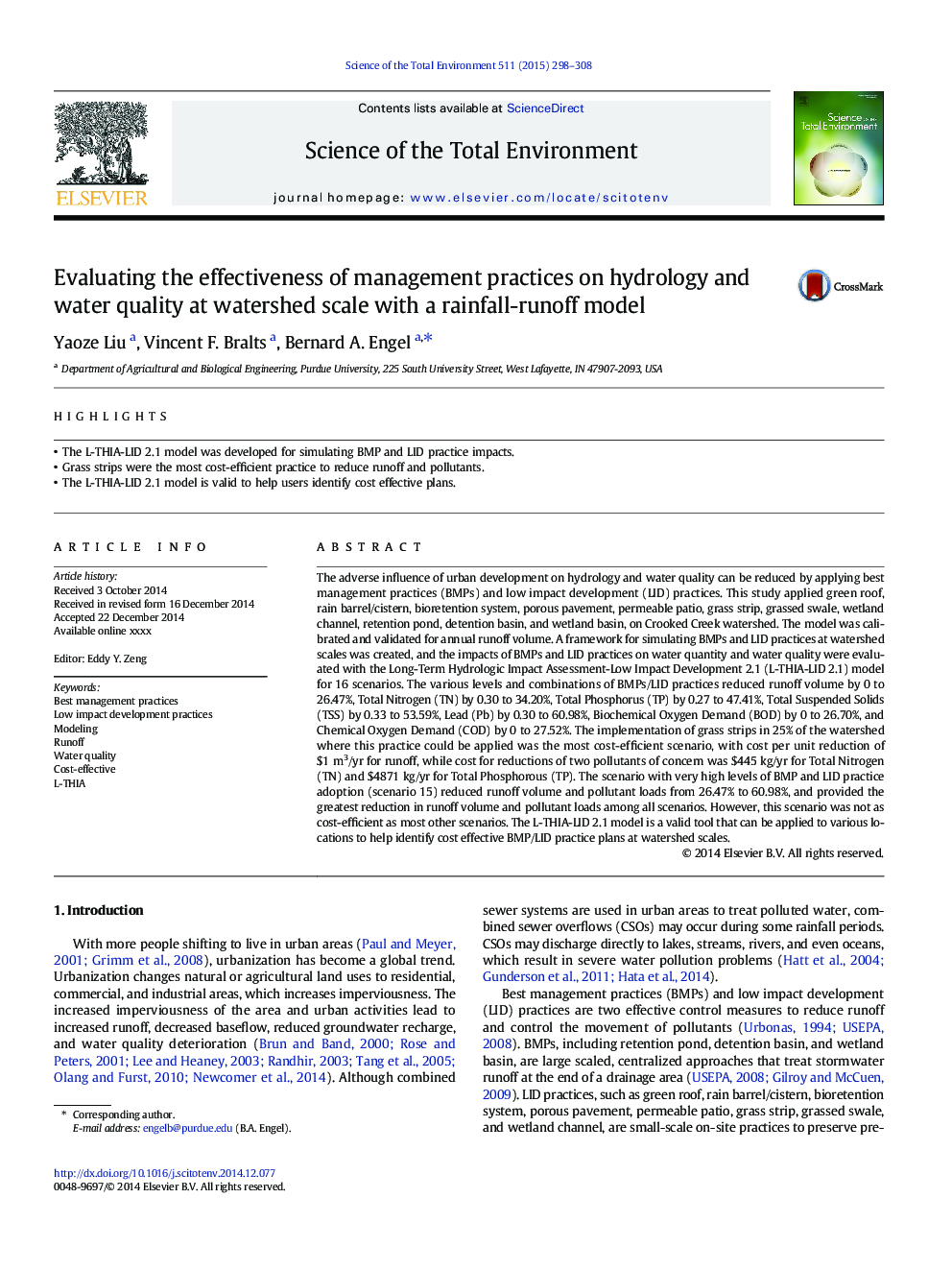| Article ID | Journal | Published Year | Pages | File Type |
|---|---|---|---|---|
| 6327460 | Science of The Total Environment | 2015 | 11 Pages |
Abstract
The adverse influence of urban development on hydrology and water quality can be reduced by applying best management practices (BMPs) and low impact development (LID) practices. This study applied green roof, rain barrel/cistern, bioretention system, porous pavement, permeable patio, grass strip, grassed swale, wetland channel, retention pond, detention basin, and wetland basin, on Crooked Creek watershed. The model was calibrated and validated for annual runoff volume. A framework for simulating BMPs and LID practices at watershed scales was created, and the impacts of BMPs and LID practices on water quantity and water quality were evaluated with the Long-Term Hydrologic Impact Assessment-Low Impact Development 2.1 (L-THIA-LID 2.1) model for 16 scenarios. The various levels and combinations of BMPs/LID practices reduced runoff volume by 0 to 26.47%, Total Nitrogen (TN) by 0.30 to 34.20%, Total Phosphorus (TP) by 0.27 to 47.41%, Total Suspended Solids (TSS) by 0.33 to 53.59%, Lead (Pb) by 0.30 to 60.98%, Biochemical Oxygen Demand (BOD) by 0 to 26.70%, and Chemical Oxygen Demand (COD) by 0 to 27.52%. The implementation of grass strips in 25% of the watershed where this practice could be applied was the most cost-efficient scenario, with cost per unit reduction of $1Â m3/yr for runoff, while cost for reductions of two pollutants of concern was $445Â kg/yr for Total Nitrogen (TN) and $4871Â kg/yr for Total Phosphorous (TP). The scenario with very high levels of BMP and LID practice adoption (scenario 15) reduced runoff volume and pollutant loads from 26.47% to 60.98%, and provided the greatest reduction in runoff volume and pollutant loads among all scenarios. However, this scenario was not as cost-efficient as most other scenarios. The L-THIA-LID 2.1 model is a valid tool that can be applied to various locations to help identify cost effective BMP/LID practice plans at watershed scales.
Related Topics
Life Sciences
Environmental Science
Environmental Chemistry
Authors
Yaoze Liu, Vincent F. Bralts, Bernard A. Engel,
